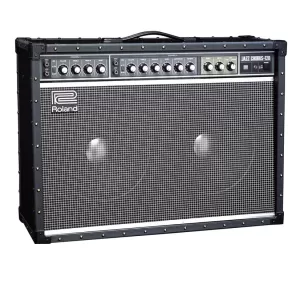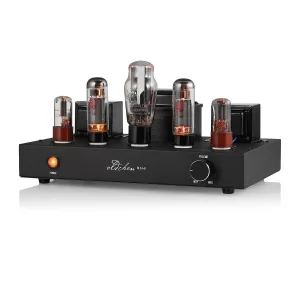
Comparing the Performance of Solid-State and Tube Amplifiers and Dispelling Myths
December 21 2023 
Inquiry
Global electronic component supplier AMPHEO PTY LTD: Rich inventory for one-stop shopping. Inquire easily, and receive fast, customized solutions and quotes.
QUICK RFQ
ADD TO RFQ LIST
In this blog, we will delve into the intricacies of both amplifier types, exploring their functionality, historical significance, testing methods, and dispelling common myths.
What is a Solid State power amplifier?

When were Solid-State Amplifiers invented?
The late 1950s and early 1960s saw the development and introduction of solid-state amplifiers. Solid-state amplifier development was greatly aided by the creation and widespread use of the transistor, a crucial solid-state semiconductor. The era of solid-state electronics began in 1947 when Bell Laboratories invented the first transistor that was commercially successful. Transistors started to replace vacuum tubes in a variety of electronic applications, including amplification, as they became more widely available and their performance increased. When solid-state amplifiers replaced vacuum tube amplifiers, there were major improvements in terms of cost, size, power efficiency, and dependability. Solid-state amplifiers became widely used in consumer and industrial electronics, audio systems, and communication equipment very quickly. Following the increasing use of solid-state amplifiers in audio amplification throughout the 1960s, transistor-based audio amplifiers were developed and eventually superseded vacuum tube amplifiers in many applications. The performance, efficiency, and compactness of solid-state amplifiers have improved since their inception thanks to developments in semiconductor technology. In a variety of electrical systems and gadgets nowadays, solid-state amplifiers are the most common kind of amplifiers.What is a Tube Amplifier?

What do Tubes do in an Amplifier?
- Signal Amplification: Electrical signals are amplified by tubes in amplifiers as their main purpose. The tube amplifies small input signals to create bigger output signals when they are introduced to its input. This method amplifies the signal by regulating the flow of electrons inside the vacuum tube.
- Voltage and Current Amplification: Tubes have the ability to increase voltage as well as current. They can boost the input signal's amplitude, giving audio amplifiers and communication systems more power to drive speakers and send signals over long distances.
- Tone Shaping: Tubes are well-known in the audio industry for their ability to control the color and tone of an amplified signal. They add non-linearities such as harmonic distortion, which add to the distinctive tone of tube amplifiers. Because of its warm and pleasant characteristics, musicians and audiophiles frequently seek out this tonal hue.
- Signal Processing: Within an amplifier, tubes can be employed for a variety of signal processing tasks in addition to amplification. This could involve signal processing techniques like impedance matching and frequency filtering.
- High-Frequency Amplification: High-frequency signals are amplified in radio frequency (RF) amplifiers using tubes for uses in telecommunications, broadcasting, and radar systems.
Difference Between Solid-State Amplifiers and Tube Amplifiers
- Tonal Characteristics: Tube amplifiers are distinguished by harmonic distortion and tonal coloration, which contribute to their warm, rich, and frequently "vintage" sound quality. Conversely, solid-state amplifiers are renowned for their less distortion, cleaner, and more linear amplification.
- Amplification Linearity: More linear amplification is usually provided by solid-state amplifiers, which means that there is little to no distortion in the output signal and it closely resembles the input signal. The distinctive sound of tube amplifiers is influenced by non-linearities and harmonic distortion, which are notably present when the amplifier is overdriven.
- Efficiency and Power Consumption: Due to the nature of vacuum tube technology, solid-state amplifiers are generally more power-efficient and consume less power than tube amplifiers, which can produce more heat and use more power.
- Size and Weight: Compared to tube amplifiers, which frequently use larger, heavier vacuum tubes, solid-state amplifiers are usually smaller and lighter.
- Reliability: Compared to tube amplifiers, which include sensitive vacuum tubes that can be more sensitive to mechanical stress, solid-state amplifiers are typically more dependable and less prone to damage from physical shock or vibration.
- Maintenance: Because vacuum tubes have a finite lifespan, tube amplifiers may require greater maintenance because of the necessity to replace them regularly. Conversely, there are no replaceable tubes in solid-state amplifiers.
Video related to Solid State vs Tube Amplifiers
How does a Tube Amplifier work?
A tube amplifier works on the basic idea of applying the input audio signal to the vacuum tube's control grid, which modifies the flow of electrons between the cathode and the plate. The input signal is amplified at the amplifier's output as a result of this modulation. The thermionic emission principle, which drives the vacuum tube's operation, releases electrons from a heated cathode that are drawn to the positively charged anode plate. By adjusting the electron flow, the control grid—which is positioned between the cathode and the plate—may regulate how much the input signal is amplified. To create sound, the amplified signal is subsequently sent to a speaker or other output device. Due to its distinctive sonic qualities, tube amplifiers are well-liked by musicians and audiophiles alike for their warm, rich tone. In general, the tube amplifier amplifies audio signals by controlling the flow of electrons inside vacuum tubes.How do Solid State Amplifiers work?
Solid-state amplifiers, unlike their tube counterparts, use transistors to amplify electrical signals. These tiny semiconductors act as electronic switches, controlling the flow of current based on the signal voltage applied to them. Here's a breakdown of how they work:- Input Stage:
- The input jack allows the input signal, which can come from a microphone or a guitar pickup, to enter the amplifier.
- The preamplifier stage receives this feeble signal after that. This step increases the signal's intensity by amplifying it many times using transistors.
- Power Amplification:
- The power amplifier stage receives the preamplified signal after it has been amplified. High-power transistors are used in this stage to further amplify the signal, enabling it to power speakers or headphones.
- Transistors use a technique known as current gain to magnify signals. A transistor's control terminal accepts a modest voltage, which permits a considerably greater current to pass through it. The initial signal is amplified by this rise in current.
- Output Stage:
- The output stage is the last step in an amplifier. The amplified signal is filtered at this stage to eliminate any extraneous noise or distortion.
- After being filtered, the signal is delivered to the headphones or speakers to be transformed into sound waves.
Are Tube Amplifiers better?
Depending on the application and personal preferences, tube amplifiers may or may not be "better" than solid-state amplifiers. Many individuals find the warm, rich sound and harmonic distortion of tube amplifiers to be attractive, particularly when it comes to music reproduction through audio. Because of their distinctive sound characteristics, musicians and audiophiles frequently choose them. Solid-state amplifiers, on the other hand, are renowned for their precision, low distortion, and high power efficiency. They are frequently employed in sound reinforcement, professional audio, and other fields where accuracy and dependability are crucial. The user's own requirements and tastes are often the deciding factors when choosing between solid-state and tube amplifiers. While some value the solid-state designs' technological advantages, others prefer the classic sound of tube amplifiers. In the end, the "better" amplifier is the one that best fits the intended use, the user's particular needs and musical tastes. Both solid-state and tube amplifiers have advantages and disadvantages, so choosing one over the other should be based on a thorough analysis of these aspects.Conclusion
In conclusion, a rich tapestry of technological progress and sound variation is revealed when solid-state and tube amplifiers are compared. People can choose the best amplifier type for their own audio demands and tastes by being aware of the inner workings, background, and practical factors of both amplifier kinds. What is a Solid State power amplifierWhen were Solid-State Amplifiers inventedWhat is a Tube AmplifierWhat do Tubes do in an AmplifierDifference Between Solid-State Amplifiers and Tube AmplifiersVideo related to Solid State vs Tube AmplifiersHow does a Tube Amplifier workHow do Solid State Amplifiers workAre Tube Amplifiers betterConclusion
Populer Posts
